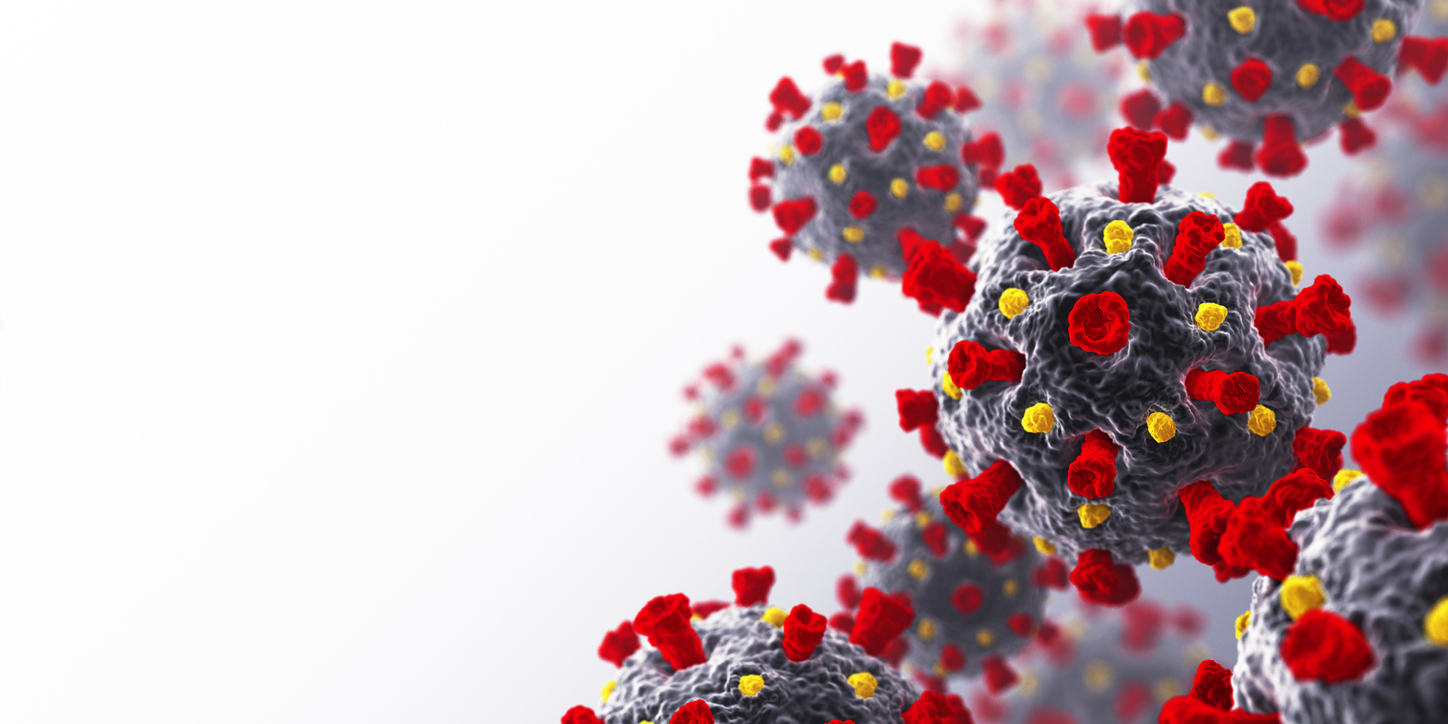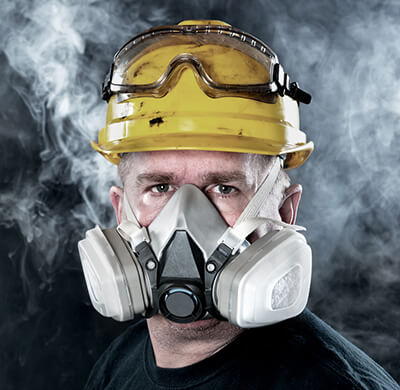
The Civil War, Pearl Harbor, 9/11 … America has faced many adversities in its history and has managed to emerge stronger in the aftermath.
But how do you fight and defeat an invisible medical enemy – especially one as seemingly challenging as the global COVID-19 coronavirus pandemic?
The first step to overcoming any crisis of this magnitude is to separate the fact from the fiction, understand what you’re up against, and know what needs to be done to protect yourself, your loved ones, and fellow citizens.
Let’s start with the basics …
What Is COVID-19?
COVID-19 is one of a large family of viruses known as coronaviruses, named for their crown shape. Some of these viruses cause respiratory illnesses in people, and the symptoms range from sneezing and coughing to fever and trouble breathing.
There have been other widespread coronaviruses, such as SARS and MERS, but COVID-19 is a novel coronavirus – meaning it is a new strain of the virus which has not been previously identified in humans. It is also highly contagious, spreading easily from person to person through coughing, sneezing, close contact with someone who has the virus, or contact with surfaces that have been recently touched by someone who has the coronavirus.
In some ways, COVID-19 and influenza (the flu virus) are similar. For example, both are spread via small droplets from the nose and mouth – but not through the air over long distances and times – and both cause respiratory disease.
However, there are key differences between the two in that:
- There is currently no specific vaccine or treatment for COVID-19.
- COVID-19 causes more severe disease in a greater percentage of cases than does the seasonal flu, with an average of 1-2 deaths per 100 people infected with COVID-19 compared to about 1 in every 1,000 infected with seasonal influenza.
- COVID-19 doesn’t appear to transmit as efficiently as the flu. When those with COVID-19 symptoms are isolated, it is possible to control the spread of the disease to others.
What Are the Symptoms of COVID-19?
The COVID-19 coronavirus causes symptoms that are similar to those for the flu and other respiratory illnesses, including:
- Fever
- Cough
- Shortness of breath
- Extreme fatigue (occasionally)
As such, most people – approximately 80% – who are infected with this virus do recover from the disease without the need for special treatment. However, among the elderly and those who have pre-existing medical issues that can cause vulnerability (such as high blood pressure, heart disease, lung disease, cancer, or diabetes), the COVID-19 coronavirus can cause severe illness such as pneumonia and organ failure – increasing the risk of death.
Scope of the Coronavirus Pandemic
Since it was first detected in China in recent months, COVID-19 has spread rapidly, person-to-person. It is now detected in more than 100 locations internationally, according to the Centers for Disease Control and Prevention (CDC).
On January 31, 2020, the U.S. Department of Health & Human Services (HHS) declared the COVID-19 coronavirus a public health emergency. On March 11, the World Health Organization designated the disease as a global pandemic, prompting the president of the United States to declare the COVID-19 outbreak a national emergency two days later.
As of March 17, 2020, there were nearly 200,000 cases of the COVID-19 coronavirus reported worldwide, with approximately 106,000 active cases and nearly 8,000 deaths. Of the active cases, 94% are considered mild, and 6% are considered serious or critical. Of the nearly 89,000 cases which have already had an outcome, 91% have recovered and 9% have died.
Of course, these numbers are constantly changing and are expected to increase sharply until the number of new cases levels off, and the virus is fully contained and/or a vaccine is available.
How to Protect Yourself from the COVID-19 Coronavirus
Although there is no current vaccine for COVID-19, you and your loved ones can avoid becoming one of these statistics by following some simple precautions:
- Monitor yourself closely (even if you have no symptoms) if you may have been exposed to COVID-19 in the last 14 days or if you are in close contact with older adults who are medically vulnerable. That means regularly checking for symptoms of respiratory illness such as fever, coughing, or difficulty breathing.
- Limit going out, avoid crowded areas (10 or more people), and increase your personal space from others (six to 10 feet) – also known as social distancing. This is especially important in helping to prevent the massive spread of the COVID-19 virus and over-taxing the healthcare system.
- Practice proper hygiene to reduce the risk of infection or spreading the disease. This includes washing your hands often with soap and water for at least 20 seconds at a time, and always wash your hands when you use the bathroom or when preparing food. If soap and water aren’t available, you can use an alcohol-based hand sanitizer to cleanse your hands.
- When coughing or sneezing, do so into a tissue or into your bending arm. Dispose of tissues immediately and wash your hands. If you do cough or sneeze into your hands, wash them immediately with soap and water or use a hand sanitizer.
- Always avoid touching your eyes, nose, or mouth, especially with an unwashed hand.
- If you have been traveling outside of the country, self-isolate for 14 days upon your return.
- Clean the surfaces of frequently used areas such as door handles, phones, TV remotes, bedside tables, toilets, and toys, using regular household cleaners or diluted bleach (one-part bleach to nine-parts water).
- If you suffer from any chronic health conditions or are older than 60, stay home as much as possible.
- If you have the option, work from home.
What to Do if You Have COVID-19
If you have – or believe you have – the COVID-19 coronavirus, reduce your contact with others. Stay at home and self-isolate.
If you have the virus but you must leave home, wear a mask or otherwise cover your mouth and nose, and maintain a distance of at least six feet from others. Avoid having visitors to your home, and avoid visiting individuals in hospitals or long-term-care facilities – especially older adults with chronic conditions. If you need supplies, have them delivered to your home instead of going out to run errands.
If you have the symptoms – such as a fever, cough, or difficulty breathing – but are not seriously ill, stay home and contact your doctor. Do not go to your doctor’s office, healthcare facility, or a lab without consulting your physician first.
As the number of documented cases of the COVID-19 coronavirus continues to rise so that the doctor can postpone your appointment. If you have a fever of 100.4 or higher, or if you have been in contact with someone with a fever over the last 14 days, call your doctor to alert them of your possible vulnerability so they will be ready for you once tests are available.
When an appointment is scheduled for your test, do not bring any guests with you to your visit. If you require assistance or if a support person is needed, call your doctor’s office to make appropriate arrangements. Also, please arrive to any doctor’s visit right before the appointment time to avoid crowding the waiting room.
If you are seriously ill with these symptoms and are in need of immediate medical attention, call 911 and let them know you may have the COVID-19 coronavirus.
Getting Through This Together
COVID-19 is not the first global pandemic, nor is it likely to be the last. However, it is a serious threat to the health and well-being of millions of people worldwide, which is a fact that none of us can ignore.
The good news is that the impact of this disease can be mitigated – saving countless lives in the process – by being diligent and following relatively simple precautions. Working together, we can bring an end to the current COVID-19 coronavirus crisis sooner rather than later, and get back to enjoying our lives.
For more information about the coronavirus, visit the CDC’s website at http://www.cdc.gov.
At Work Partners, we believe it is our role and responsibility during this time of uncertainty to prioritize the health and wellness of our patients, employees and community. Because of this, we will continue to make informed decisions to protect you and your well-being. We have reviewed our daily policies and practices to make certain we are utilizing the most advanced tools available and rigorously enforcing policies to achieve the highest level of safety possible. We will continue to track and follow CDC recommendations and guidelines to mitigate spread and will evolve our preparedness and risk mitigation plans as appropriate.
Nothing is more important to us than protecting the health and wellness of our patients, team members and community. This is what we are implementing currently:
- screening all patients who enter the building with questionnaires and temperatures.
- We are providing multiple CDC-approved hand sanitizing stations in the office for routine use.
- Facemask or gloves will be available at the front desk.
- We are recommending voluntary self-quarantine for patients who show signs and symptoms of COVID-19 (fever, cough, shortness of breath).
- For at risk patients, to allow for social distancing, we can work with you, your employer and worker’s compensation insurance carrier to reschedule your appointment via telemedicine or for a later date in the office.
Most of our services are continuing as usual aside from spirometry testing/PFT screens. The ACOEM (American College of Occupational and Environmental Medicine) has recommended that we suspend screening at this time until further notice. We believe that OSHA is in the process of introducing a temporary guideline as well. All breath alcohol testing will be done outside with proper PPE if necessary. Regarding new injuries, we will be conducting in office evaluation and treatment as usual unless the patient is symptomatic with fever, cough, shortness of breath, or any other sign/symptom of a lower respiratory infection. In that circumstance, the medical providers will triage appropriately which may include recommendation to proceed to the hospital if medical attention is needed immediately. Otherwise, we will arrange for a telehealth visit. All follow up visits will be conducted in the same manner if they are symptomatic and otherwise, we are seeing them in the clinic. It is recommended for symptomatic patients to “self-isolate” at home for 7 days after the symptoms first appeared AND 72 hours after the fever has gone away, with improvement in respiratory symptoms. It is recommended to “self-quarantine” for people that are not sick but have been exposed (in close contact with someone who is sick). They are to stay away from others for 14 days to monitor for symptoms of the virus.
We do not offer COVID-19 testing. What we do offer, is triage by telephone for cases that employee’s and their employer suspect may have been exposed to the virus via the workplace. The medical providers here can then provide triage and coordination of their care via telehealth visit. This will include screening and recommendations. We will be using Mesa County Health Department as our main resource and for testing as indicated.
As of now, this is how we are conducting business. We have protocols in place, but as you know, there are many variables and information changes rapidly. We are doing our part to keep up with CDC, state and Mesa County Health Department guidelines and recommendations. We will keep you posted with any changes.






